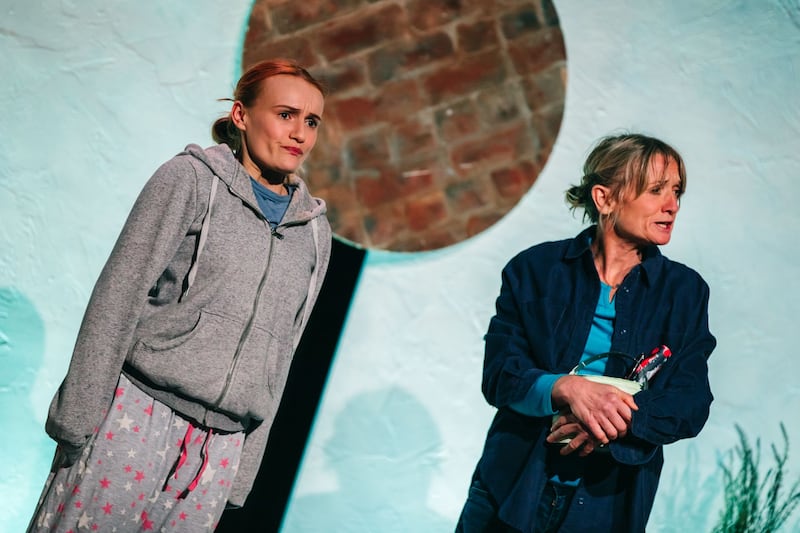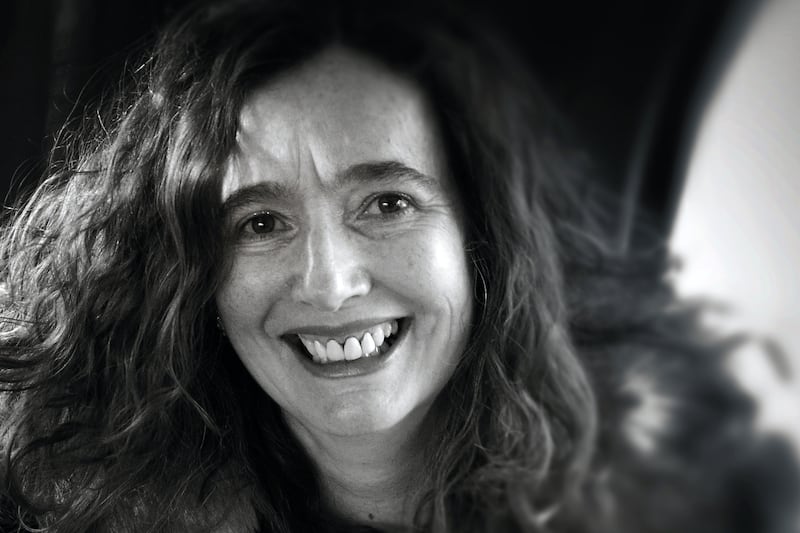Claire, a young mother from the northeast of England, speaks softly as she recalls the day in 2019 when the last of her three children was removed from her care by social services. She was allowed a “final contact” meeting, one last chance to say goodbye to her baby. But the social workers wouldn’t allow her to keep the photographs. They told her she wasn’t in the “right frame of mind” and her child was taken away.
Claire’s life was chaotic. When she was 16, she entered a relationship with a man who was abusive and controlling. “I wasn’t allowed out of the house. I was literally under control,” she says. The situation lasted for four years and her first two children were eventually removed from her care due to the situation in the house and the impact it had on Claire.
She experienced serious mental health difficulties. Subsequently, a judge authorised the removal of her youngest child using the so-called “crystal ball” method, where an assessment is made that the child could be exposed to harmful neglect in future.
“At the time, I’d miss doctors appointments for myself. In the future, they thought I could be late for school with the bairn, miss appointments for the bairn. Possibly that could be true. But they didn’t give me any supports to help,” Claire says.
READ MORE
“Then they take the only reason that you breathe away from you.”
Vanessa is also from the northeast, where the biggest cities include Newcastle and Sunderland. In person she is more assertive and gregarious than Claire, but her outwards hardiness belies a similar inner trauma. The last of Vanessa’s four children was taken from her in 2018. She was also a victim of domestic abuse and led a chaotic life.
Vanessa’s eldest, a girl, was taken away due to the risks in the home six months before the others. She wasn’t a baby. “I had been a good mam for 11 years,” insists Vanessa. Yet the courts determined her children were at risk. Vanessa blames the domestic abuse and the circumstances it procured for the deterioration in her home life that led to her children being removed. Her three younger kids were taken the summer after her eldest and some have since been adopted.
Five years on, she appears remarkably stoic as she recalls life before her family was splintered. “You had the mayhem. I had four kids, my house was nuts. Then they got took and I had nothing.”

On the same day that Vanessa was having her “farewell meeting” with her children, she was referred to Pause, a charity that operates across Britain providing one-to-one support to women who have had multiple children removed from their care. Since about 2015, 1,150 women who each had an average of three children removed have completed Pause’s 18-month support programme.
Claire has also been helped by Pause and her mental health is improving. Both women have turned their lives around and now advocate for the charity. Yet supporting mothers whose children have been removed for their safety is not always a fashionable cause. Society judges them harshly, yet the reality of their lives is often complex.
“They are not monsters,” says Pause worker Sarah Moat, the practitioner in the northeast who took Vanessa’s case on the day her kids were removed. Most are victims of abuse themselves.
There is a phenomenon in Britain where some mothers, often with addiction issues and the majority also the victims of male violence, have multiple children taken from them by the courts and social services. Yet amid their tumultuous lives, some keep getting pregnant over and over again, even as their children are repeatedly removed. Many struggle to escape the doom loop of a negative relationship, where their abuser may be their only confidante or occasional source of affection.
Official data on the issue is sketchy. It is focused on how many children are taken into care, not how many of them come from the same mothers. Research from the University of Lancaster suggests that over a decade until 2021, 96,457 mothers appeared in care proceedings in England and Wales. About 14 per cent returned to court with proceedings for at least one new child.
It can be a multi-generational cycle of trauma. About 40 per cent of the mothers who had multiple children removed were in care themselves as youngsters.
Although the average Pause woman has had three children taken away, the charity says it is not unusual for some women to have “seven, eight, nine” kids removed. Vanessa knows a woman in her area who has had 14 children taken into care. Ellen Marks, a social worker and Pause’s director of practice, says she worked on a case where one woman had 15 children removed. The northeast is a particular black spot.
A woman might text me back to say ‘Sarah, I’ve got up this morning. I’ve washed my face. I’ve got dressed. I’m going to the shop to get milk to make a cuppa.’ That’s a measure of success, because last week she might have been sat in her jammies with the curtains closed.
— Pause worker Sarah Moat
After a 16-week introductory support programme to help get their lives back on track, most Pause women commit to taking effective, long-term contraception such as the pill injection if they are to progress to the full 18-month programme of support. This represents the eponymous “pause” from the charity’s name – a pause in pregnancy to create space to stabilise their lives.
A March 2020 evaluation of the charity found that conditionality on contraception caused hesitancy in some local authorities referring women to Pause. “We had a little bit of anxiety about people receiving services on the back of having to do something,” said one local authority manager.
Some Pause practitioners who work one-to-one with the women also expressed reservations to the independent reviewers. One described it as “really uncomfortable”. Another said it “feels difficult, tricky ... it’s gone past the wire with a couple of my women [and] feels more like bribery”.
Many of the Pause women interviewed for the review said it gave them breathing space when they were vulnerable. “The thing is once your kids get taken away from you, you don’t really have much. You’ve got room for all the bullshit – getting into drinking, getting into drugs. You could end up making another child,” said one.
Pause practitioner Moat says the tendency of some women to get repeatedly pregnant can come from a desire “to be loved and to love someone. Women who come from the care system, their relationships are often fractured, not healthy, and often transactional.”
When the children are removed, the women are always left behind with trauma and grief. Often, there is little follow-up care from the state and plenty of judgment from society.
Moat, who is employed by the charity Barnardos, which operates the Pause model in some areas, says the underlying philosophy is to build a relationship with a woman and help her with everyday life. This is the focus of the initial 16-week engagement, texting and phoning the woman, calling to her home, going for coffee, accompanying her to appointments.
“A woman might text me back to say ‘Sarah, I’ve got up this morning. I’ve washed my face. I’ve got dressed. I’m going to the shop to get milk to make a cuppa.’ That’s a measure of success, because last week she might have been sat in her jammies with the curtains closed.”

The woman must have no kids currently under her care to qualify for the programme, which originates from a pilot scheme in East London in 2013 that laid the foundation for the charity. Moat says that early on, she will raise the issue of contraception with the woman. She won’t pressure her and if the woman decides against it, she will help her access other social services. If the woman signs up after the 16 weeks, she goes on the Pause 18-month support programme.
Pause operates as a national franchise, with local authorities and sometimes other charities running the majority of its 29 practices all over Britain to deliver the central model. An independent study shows it leads to a 14 per cent decline in the number of infants sent into care.
But its funding model is under threat. Many local authorities, which ultimately pay for the service, are reining in spending amid the fiscal constraints that have followed the pandemic. Its three practices in Northern Ireland are currently suspended because there is no functioning government to make them a budget allocation. England’s northeast, where the services are needed most, is one of the hardest hit by cutbacks.
“The last six months it has been politically and economically difficult and this has made some local authorities unsettled,” says Jules Hillier, the national chief executive of Pause. “In some cases, it feels almost like panic. Local authorities simply cannot afford to deliver the services they want.”
Hillier says studies show that for each £1 spent on a Pause service, it saves the public sector £4.50 over the next four years in lower social care, health and other costs. Retrenchment now may be storing up problems for down the line.
You had the mayhem. I had four kids, my house was nuts. Then they got took and I had nothing
— Vanessa
Moat says Pause women often are wracked with “internal shame” and feel like they “have no voice”. Pause in the northeast has collaborated with Open Clasp, a feminist, political theatre group, to create a play, Lasagna, based upon the experience of such a woman. It begins from the moment her baby is removed and follows the development of a positive friendship with a neighbour.
The play was written by playwright Catrina McHugh, who deftly weaves in humour to keep audience thinking elevated. The central character, Sally, is drawn from the collective experiences of Pause women such as Vanessa and Claire, who had a personal input. The play has been on tour but requires further funding to expand its reach.
“Everything you hear Sally saying is from one of us lasses, all of our experiences” says Vanessa. “When you’re sitting there and you’re watching it, you know which bit is yours. Those are my words. People are listening to what I’m saying. I’m being heard. It’s, like, magical.”
What does she want officials, policymakers, to hear from a performance of Lasagna? “Provide more money. Make the system better.”
Claire, meanwhile, says she now understands that undiagnosed mental health difficulties were at the root of her problems. “I never knew it until me youngest got took off us. That was because I got help then. I never got that before.”



















